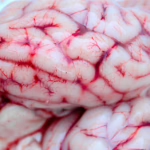Inside the Metabolic Engine: The Role of Catabolism in Human Health
Introduction
Metabolism is a complex and intricate process that sustains life, comprising two main pathways: anabolism and catabolism. While anabolism focuses on building up molecules, catabolism is the process of breaking down bigger molecules into smaller ones, typically to release energy. This interaction within the metabolic pathways is crucial for maintaining homeostasis, fueling cellular activity, and ensuring overall health. Understanding catabolism provides insight into various physiological functions and has significant implications for treating diseases related to metabolism.
Understanding Catabolism
Definition and Purpose
Catabolism refers to the biochemical pathways that break down larger molecules into smaller units, typically generating energy in the process[^1]. It includes the degradation of carbohydrates, fats, and proteins to produce adenosine triphosphate (ATP), which cells use as a primary energy source. This process is vital for meeting energy needs during periods of rest and activity and for maintaining metabolic balance[^2].
Key Pathways of Catabolism
The primary pathways involved in catabolism include glycolysis, the citric acid cycle (CAC or Krebs cycle), and oxidative phosphorylation. Understanding these pathways offers insights into how catabolism operates at a cellular level.
- Glycolysis
Glycolysis is the first step in carbohydrate metabolism, occurring in the cytoplasm of cells. It involves converting glucose into pyruvate, resulting in a net gain of two ATP molecules and two NADH molecules[^3]. This process is anaerobic, meaning it can occur without oxygen, making it essential during intense physical activity when oxygen supply is inadequate.
- Citric Acid Cycle
Following glycolysis, if oxygen is present, pyruvate enters the mitochondria and undergoes further oxidation in the citric acid cycle. Here, it is transformed into carbon dioxide, and energy-rich molecules ATP, NADH, and FADH2 are produced. The CAC plays a pivotal role in cellular respiration, as it provides the precursors for fatty acid synthesis and amino acid metabolism as well[^4].
- Oxidative Phosphorylation
The NADH and FADH2 generated from both glycolysis and the Krebs cycle feed into the electron transport chain, a series of protein complexes embedded in the mitochondrial membrane. This process ultimately leads to the synthesis of ATP through oxidative phosphorylation, using oxygen as the final electron acceptor[^5]. The efficiency of this process underscores the importance of catabolism in energy production.
Catabolic Hormones and Regulation
Hormonal regulation plays a significant role in catabolism, primarily through hormones such as glucagon, cortisol, and adrenaline. These hormones ensure that catabolic processes align with the body’s energy needs and external circumstances.
Glucagon and Catabolism
Glucagon is primarily produced by the alpha cells of the pancreas and is critical for maintaining blood glucose levels—especially during fasting. It stimulates gluconeogenesis and glycogenolysis in the liver, increasing the availability of glucose for energy[^6]. This activity underscores how catabolism can support energy needs in a fasting state.
Cortisol’s Role
Cortisol, often termed the "stress hormone," is released from the adrenal glands during periods of stress. It promotes gluconeogenesis and the mobilization of fatty acids from adipose tissue to provide energy. Chronic elevated cortisol levels can lead to catabolic states, contributing to muscle wasting and other health issues[^7].
Adrenaline (Epinephrine)
Adrenaline is another critical hormone that triggers catabolic processes during acute stress, such as exercise or injury. It stimulates glycogen breakdown and lipolysis, contributing to increased glucose and fatty acid availability for energy production[^8].
The Impact of Diet on Catabolism
Diet significantly influences catabolic processes, particularly in how the body utilizes carbohydrates, fats, and proteins. Understanding dietary intake helps in manipulating catabolism for health benefits.
Carbohydrates and Catabolism
Carbohydrates are the body’s preferred energy source, especially during high-intensity exercise. The breakdown of carbohydrates through glycolysis is critically dependent on their availability[^9]. In scenarios of lower carbohydrate intake, the body adapts by increasing fat oxidation and the utilization of ketone bodies developed via fatty acid catabolism.
Fat Catabolism
Fat catabolism, or lipolysis, involves breaking down triglycerides into glycerol and free fatty acids. This process becomes vital in energy production, particularly during prolonged exercise or fasting[^10]. Ketogenic diets, characterized by high fat and low carbohydrate intake, can enhance fat oxidation, promoting efficient energy utilization and weight loss.
Protein Catabolism
While proteins primarily serve structural and functional roles, they can be catabolized to meet energy demands when carbohydrate and fat stores are insufficient. The breakdown of amino acids for energy can impair muscle mass and function if sustained over time, highlighting the importance of adequate protein intake for maintaining health[^11].
Catabolism and Health
Muscle Health and Catabolism
Catabolism plays a dual role in muscle health. While acute catabolic processes are necessary for energy production, excessive catabolism can cause muscle wasting, especially in older adults or those with chronic illnesses. This is often seen in conditions such as cachexia or sarcopenia[^12]. Understanding the balance between catabolism and anabolism is crucial for maintaining muscle mass and function.
Catabolism in Metabolic Disorders
Metabolic disorders such as diabetes, obesity, and metabolic syndrome underscore the complexities of catabolic processes. In diabetes, for example, impaired glucose metabolism leads to increased reliance on fat for energy, highlighting how dysfunction in catabolic pathways can markedly affect health[^13].
Catabolism and Chronic Inflammation
Chronic inflammation can also influence catabolic activity. Conditions such as rheumatoid arthritis trigger elevated levels of catabolic hormones and cytokines, leading to increased muscle breakdown and fat accumulation[^14]. Managing inflammation through diet and lifestyle can help mitigate these catabolic effects.
The Future of Catabolic Research
Understanding catabolism’s role in health is critical for developing targeted interventions for various diseases. Ongoing research into metabolic pathways offers promising avenues for treating metabolic disorders and promoting wellness.
Metabolism and Aging
As individuals age, metabolic processes slow, leading to body composition changes, decreased muscle mass, and increased fat accumulation. Research into how catabolism changes with age may lead to strategies that enhance metabolic health in older adults[^15].
Innovations in Catabolic Therapies
Advancements in biotechnology offer potential therapeutic targets to modulate catabolic processes. For example, targeting the expression of catabolic enzymes or pathways could help in conditions characterized by excessive breakdown, such as muscle wasting in cancer patients[^16].
Personalized Nutrition
The field of personalized nutrition, which aims to tailor dietary approaches based on individual metabolic profiles, is gaining traction. Research indicates that understanding an individual’s unique catabolic responses could optimize dietary interventions, promoting better health outcomes[^17].
Conclusion
The role of catabolism in human health is profound, influencing energy production, muscle health, metabolic function, and disease states. As research advances, a deeper understanding of catabolic pathways will pave the way for innovative therapies and personalized health strategies. Emphasizing a balanced approach to diet and lifestyle can help maintain optimal catabolic processes, promoting long-term health and well-being.
References
- Berg, J. M., Tymoczko, J. L., & Stryer, L. (2002). Biochemistry. W.H. Freeman.
- Kahn, B. B., & Flier, J. S. (2000). Obesity and Insulin Resistance. Journal of Clinical Investigation, 106(4), 473-481.
- Nelson, D. L., & Cox, M. M. (2008). Lehninger Principles of Biochemistry. W.H. Freeman.
- Dykens, J. A. (2002). Metabolism of the Citric Acid Cycle. Nutritional Biochemistry.
- Hinkle, P. C. (1998). Mitochondrial Electron Transport and Oxidative Phosphorylation. In: Biochemistry.
- Cherrington, A. D. (1999). Role of Glucagon in Metabolism. Nutrition Reviews.
- Chrousos, G. P., & Gold, P. W. (1992). The Concepts of Stress and Stress System Disorders: Overview of Physical and Behavioral Homeostasis. JAMA.
- Thorell, A., et al. (1999). The Big Picture: Acute-Phase Response to Trauma. Surgery.
- Wolever, T. M., & Bjorck, I. (2002). Glycemic Index: An Overview. Nutrition Reviews.
- Sinha, R., et al. (2002). Energy Metabolism: The Role of Fat. Diabetes.
- Pasiakos, S. M., et al. (2013). Protein Supplementation. Nutritional Reviews.
- Morley, J. E. (2006). Sarcopenia: A Major Cause of Functional Decline in Older Persons. Journal of Nutrition, Health & Aging.
- DeFronzo, R. A. et al. (1992). Insulin Resistance in Non-Insulin-Dependent Diabetes Mellitus. Diabetes Care.
- Kaser, A., et al. (2010). Immune Activation in Inflammatory Bowel Disease. Gut.
- Tzeng, S. et al. (2015). Age-Related Changes in Human Metabolism. Aging Cell.
- Ribeiro, D. A. et al. (2014). Therapeutic Targets in Muscle Wasting Disorders. Nature Reviews Drug Discovery.
- Zeevi, D., et al. (2015). Personalized Nutrition by Prediction of Glycemic Responses. Cell.


























Add Comment